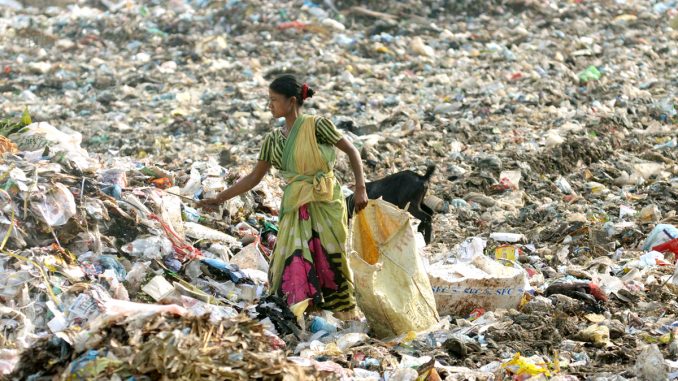
By Anant Sudarshan
New Delhi : Since taking office, President Trump has made an across-the-board rollback of regulations a top priority. His position: regulations are burdensome and expensive, so we should have less of them. Although the administration’s current approach is akin to throwing the baby out with the bathwater, there is a lot to be said for trying to identify new policy approaches that are flexible, efficient, and low cost. That’s especially the case when it comes to the environment, and once upon a time the Republican Party was at the forefront of this type of thinking.
Environmental regulations—not just in the United States, but around the world—are overwhelmingly command and control regulations. This means that a government makes rules—bans polluting on processes or emissions standards, for example—and then attempts to enforce them using penalties.
Getting this system to work is expensive and, in some countries, nearly impossible to implement. The regulator needs to be able to deploy an army of trained staff to monitor polluting industries, and it needs to systematically enforce penalties in the face of local political and economic realities. Credible data on emissions can be hard to obtain, and enforcing harsh penalties even tougher. Worse, these regulations impose high costs on industry.
The Indian state of Maharashtra is the most industrialized state in India. But the state government is aggressively working to reduce pollution. While, thus far, it has mostly pursued top-down approaches, earlier this month the Maharashtra government announced a new program that could transform how the entire country thinks about environmental regulation.
The Maharashtra Star Rating Program is the first of its kind in India. But it joins a small cohort of like-minded programs around the world. In the United States, such initiatives began back in the 1990’s with the Toxic Release Inventory and public disclosure programs aimed at safe drinking water. Around this same time, perhaps the most innovative disclosure program came from Indonesia, which initiated a ratings regime for industrial water pollution called The Program for Pollution Control, Evaluation and Rating (PROPER). In 2014, China made public information on pollution from over 15,000 plants across the country. It is now aggregated into the China Institute of Public & Environmental Affairs Blue Map app.
Putting information out in the open can be an effective way to reduce pollution for a number of reasons. First, it makes citizens more informed, giving them the ammunition needed to call for change. In turn, this pushes regulators to not only use the data they are already collecting, but to collect more of it on a regular basis. Already, the Maharashtra program is doing its job in this regard. With more data available to them, journalists have started asking some tough questions of corporations, forcing them to respond and act.
Transparency initiatives may also improve the environmental performance of firms simply by allowing them to see how much their competitors are polluting. Studies in both developing and developed countries suggest that knowing how your peers are doing can be an important mechanism of change. When firms are given this information, they may discover inefficiencies in their operations and new opportunities to cut pollution.
Even better, when a plant is ranked well there may be more than just bragging rights up for grabs. There is some evidence showing that when a firm is seen as being better for the environment, it also does better in the stock market.
That said, the Maharashtra Program is unique because it not only represents new ideas, it also involves a commitment to test those ideas. That’s not something we see much of with government initiatives, where victory is often announced the day before new regulation comes into force.
In India and around the world, pollution data too often resides on yellowed pages in darkened and dusty rooms in tiny regulatory offices scattered across the map. Throwing open the windows and letting sunlight stream in is an easy way to allow information and the public guide and improve regulations. After all, the answer isn’t stripping away government, but pushing it to work better.
Source: Forbes

Leave a Reply